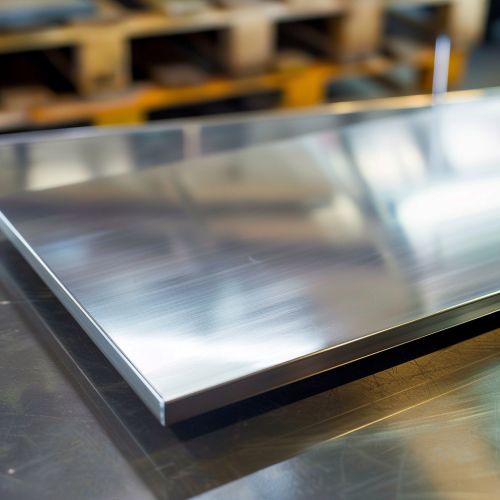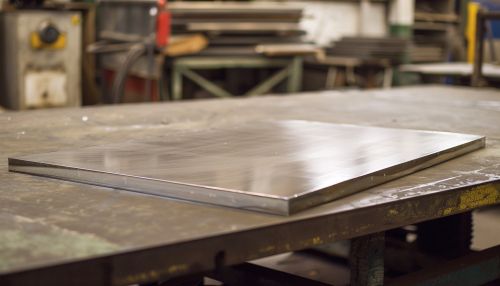Sheet metal
Introduction
Sheet metal is a versatile material used in a variety of industries, including construction, automotive, aerospace, and more. It is a flat, thin piece of metal that has been formed by an industrial process. Sheet metal is often used in metalworking, and it can be cut and bent into a variety of shapes.


History
The use of sheet metal dates back to ancient times. In the Bronze Age, early metal workers discovered that beating metal into thin sheets made it stronger and more durable. This discovery led to the development of sheet metalworking techniques that are still in use today. The industrial revolution brought about significant advancements in the production of sheet metal, with the introduction of new machinery and techniques that allowed for mass production.
Production
Sheet metal production involves several steps. First, the raw material, usually a type of metal such as steel, aluminum, or copper, is melted down in a furnace. The molten metal is then poured into a mold and allowed to cool and harden. Once the metal has solidified, it is removed from the mold and rolled into a flat sheet. This process is known as hot rolling. The sheet is then cut into the desired size and shape.
Types of Sheet Metal
There are many different types of sheet metal, each with its own unique properties and uses. These include:
- Steel: Steel is a commonly used type of sheet metal due to its strength and durability. It is often used in construction and automotive industries.
- Aluminum: Aluminum sheet metal is lightweight and corrosion-resistant, making it ideal for use in the aerospace industry.
- Copper: Copper sheet metal is highly conductive, making it a popular choice for electrical applications.
- Brass: Brass sheet metal is often used for decorative purposes due to its shiny, gold-like appearance.
- Bronze: Bronze sheet metal is strong and corrosion-resistant, making it suitable for use in marine environments.
Applications
Sheet metal has a wide range of applications, from industrial to artistic. In the construction industry, it is used for roofing, siding, and HVAC systems. In the automotive industry, it is used to make body panels for cars and trucks. In the aerospace industry, it is used to construct parts of aircraft. Sheet metal is also used in the production of kitchen appliances, such as stoves and refrigerators. In the art world, sheet metal is often used for sculptures and other decorative pieces.
Sheet Metal Working Techniques
There are several techniques used to work with sheet metal. These include:
- Cutting: This involves using a variety of tools to cut the sheet metal into the desired shape. Some common cutting tools include shears, plasma cutters, and laser cutters.
- Bending: Bending is a process where the sheet metal is deformed by straining it beyond its yield strength but below its ultimate tensile strength. This results in a permanent deformation, changing the shape of the sheet metal.
- Drawing: Drawing is a process where the sheet metal is stretched into a thin piece. This is often done using a die, which shapes the metal into a specific form.
- Punching: Punching is a process where a hole is created in the sheet metal. This is done using a punch press, which forces a tool, called a punch, through the metal.
- Welding: Welding is a process where two pieces of metal are joined together by melting the surfaces at their interface and adding a filler material to form a pool of molten material that cools to become a strong joint.
Safety Considerations
Working with sheet metal can be dangerous if proper safety measures are not taken. Sharp edges can cause cuts and lacerations, and improper handling can lead to serious injuries. It is important to wear appropriate personal protective equipment, such as gloves and safety glasses, when working with sheet metal. Additionally, proper training and adherence to safety protocols are crucial in preventing accidents.
Future of Sheet Metal
With advancements in technology, the future of sheet metal looks promising. New techniques and machinery are constantly being developed, allowing for more efficient and precise production of sheet metal. Additionally, the increasing demand for sustainable and environmentally-friendly materials is leading to the development of new types of sheet metal, such as those made from recycled materials.
